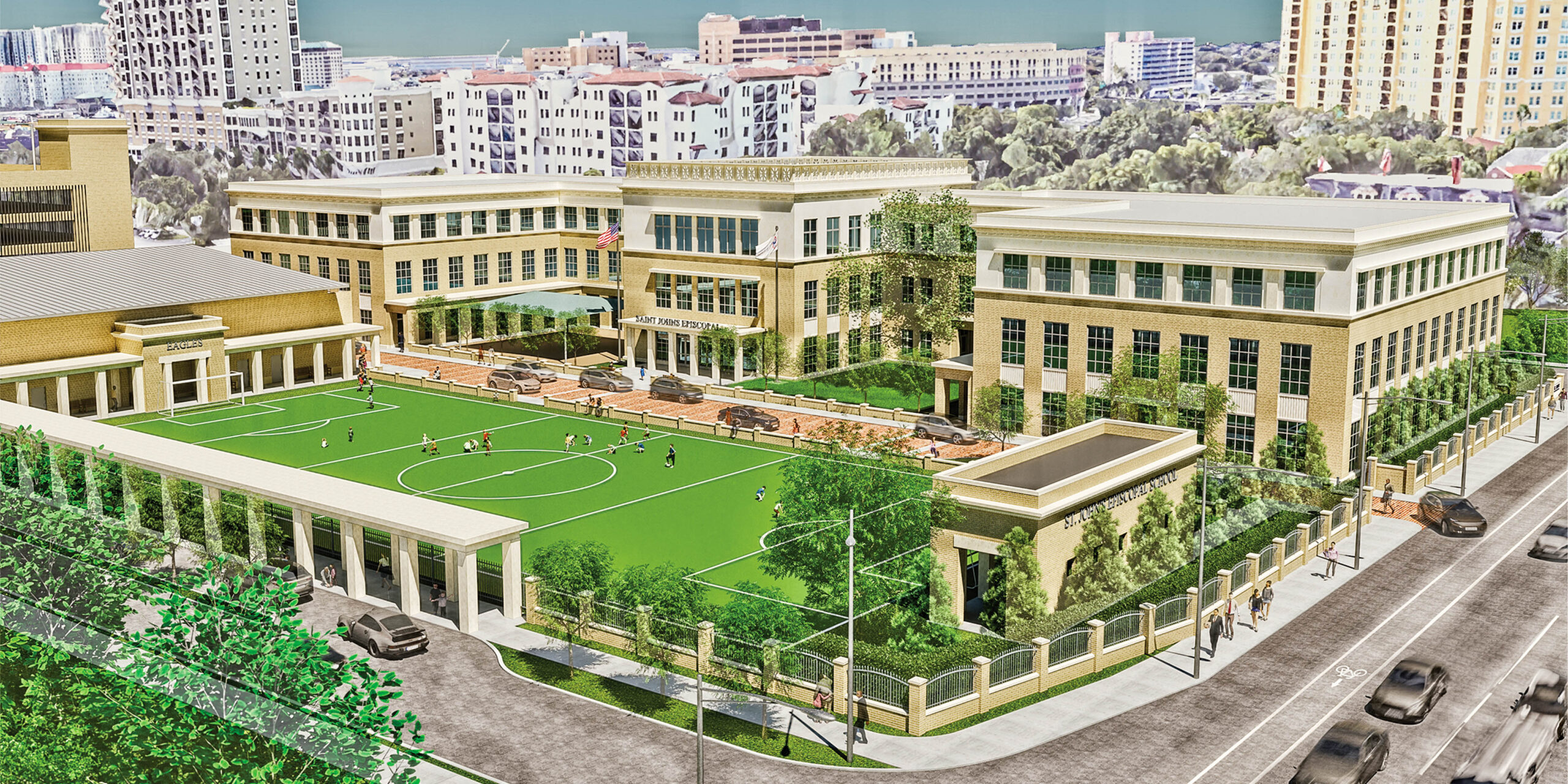Photographs Courtesy of St. John’s Episcopal Parish Day School
On October 30, 1949, St. John’s Episcopal Church, a fixture in the Hyde Park neighborhood since 1911, broke ground on a new parish hall adjacent to the church on South Orleans. The ceremony represented a big step forward for the church, which would be adding an auditorium and education building as well as facilities for social activities and meetings, classrooms and offices. The new parish hall allowed for a new Day School, which opened to early elementary age students on September 10, 1951.
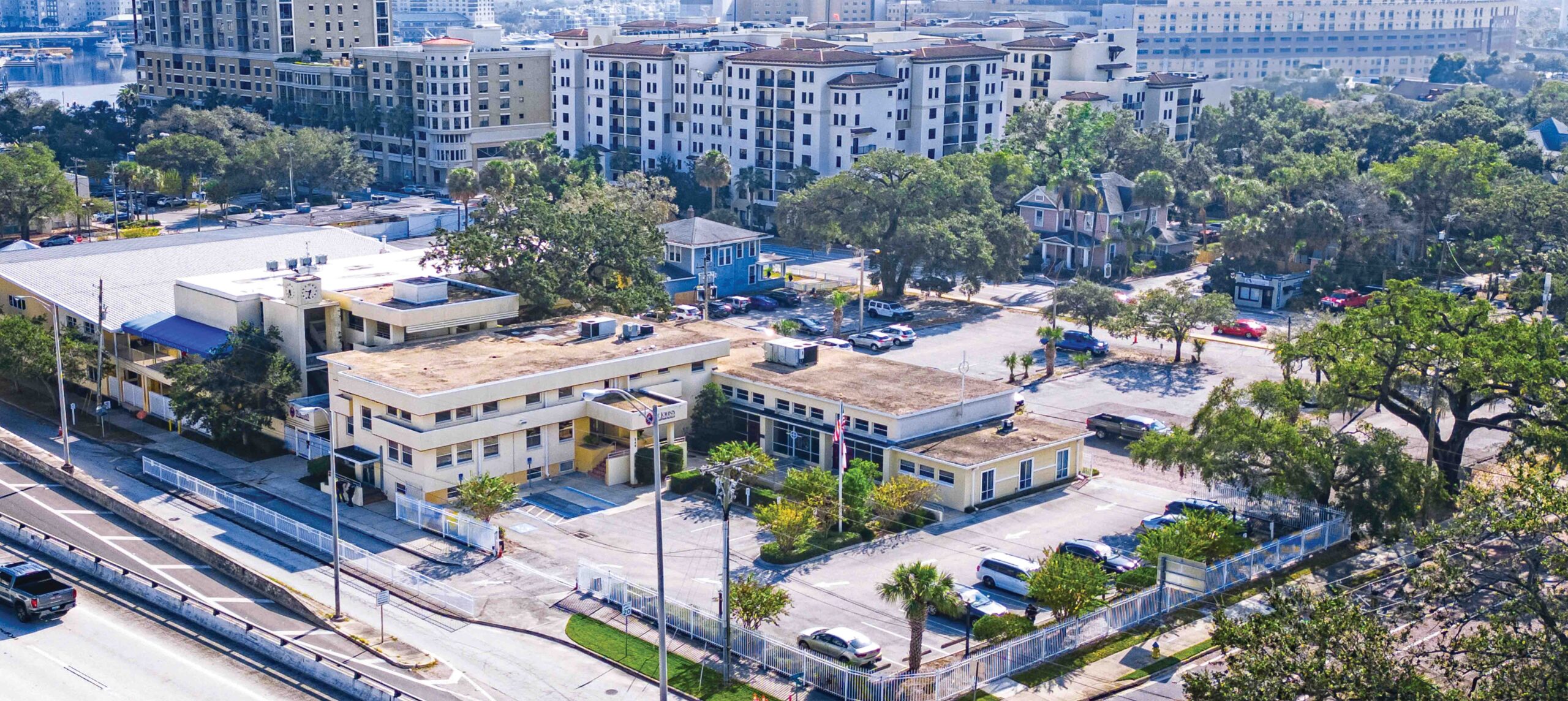
The school continued to expand its enrollment, adding second and third grades in 1952. The parish school took a major step forward in 1954 with the hiring of headmaster Father George Burchill while expanding classes through the sixth grade. Father Burchill’s firm but steady hand ushered in a new era for St. John’s Parish School, and soon seventh and eighth grades were added.
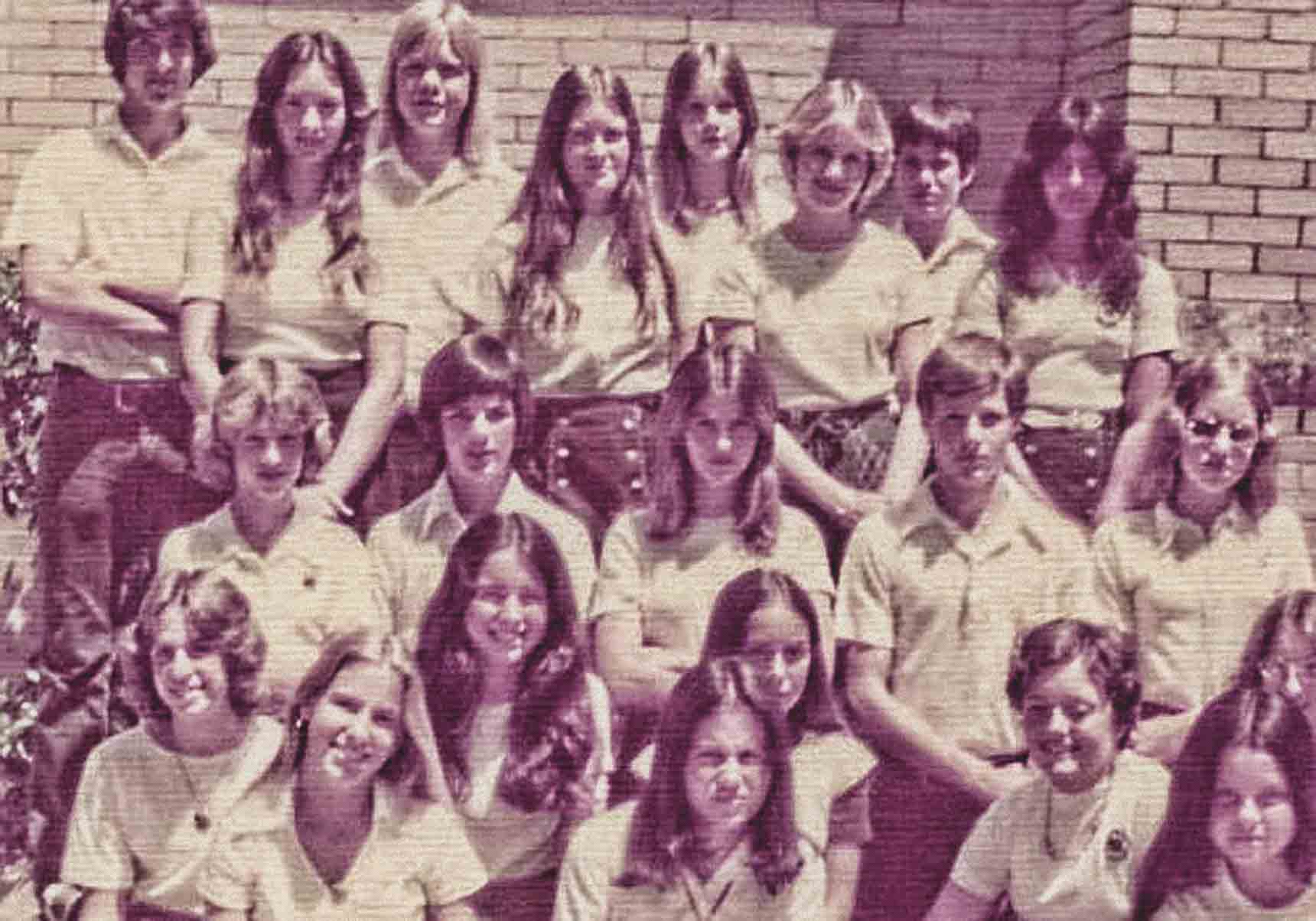
In 1961 the school was at a crossroads. Burchill announced that St. John’s would be dropping junior high school classes in favor of boosting space for elementary students, with the hope of increasing elementary enrollment from 183 to 300 students. Burchill explained, “It is part of long-range development that will eventually be able to accommodate all children of St. John’s Parish who wish enrollment.” At that time, the school had a long waiting list, partly because school administrators limited each class to 20 students.
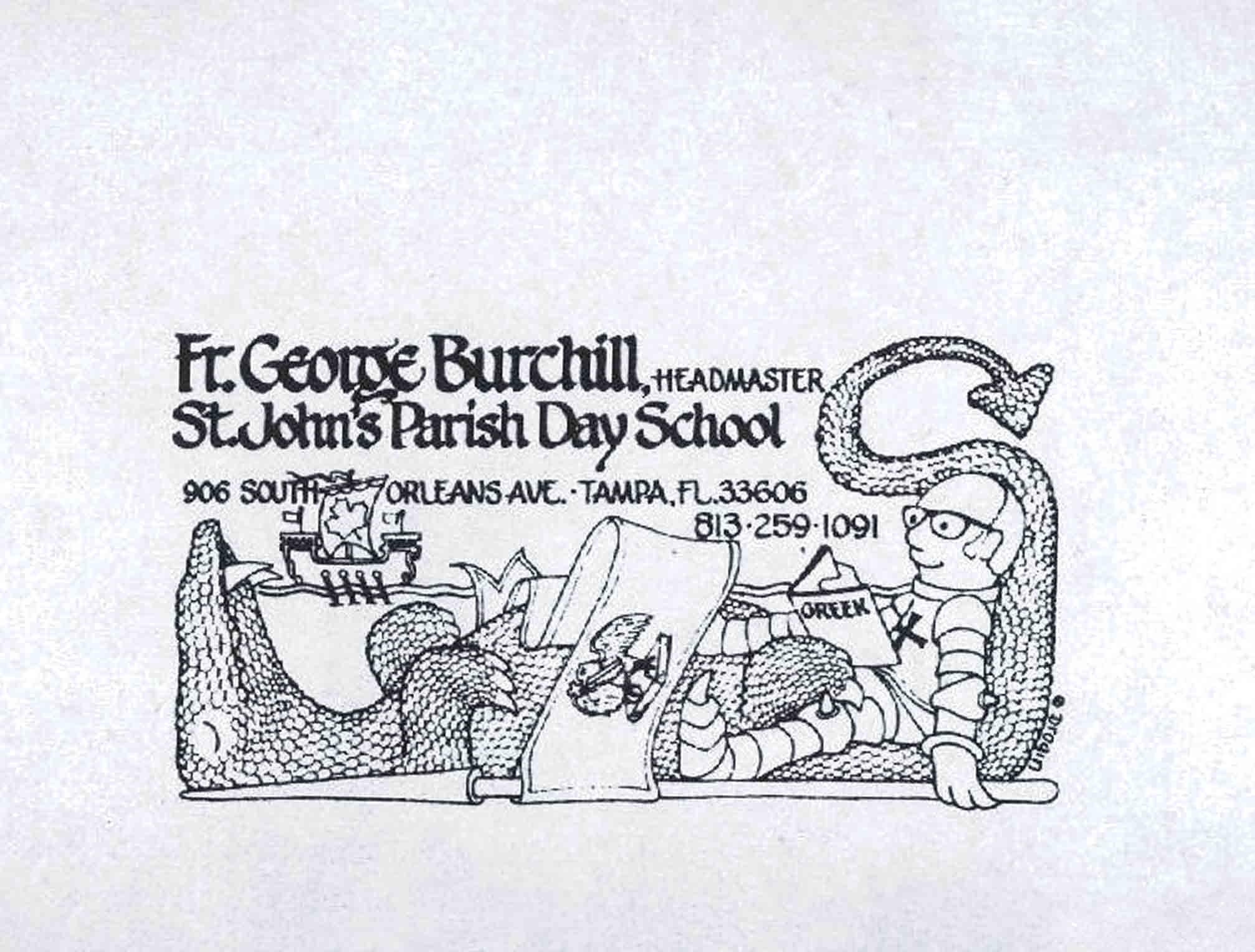
The growth of the elementary school, as well as the preschool offerings, put a strain on the South Orleans campus. In 1970, St. John’s purchased a home and an old gas station at 1002 South Rome and converted the property to house their Primary Division (pre-kindergarten and kindergarten classes). The new Primary Division opened in 1971 and is still in operation today.
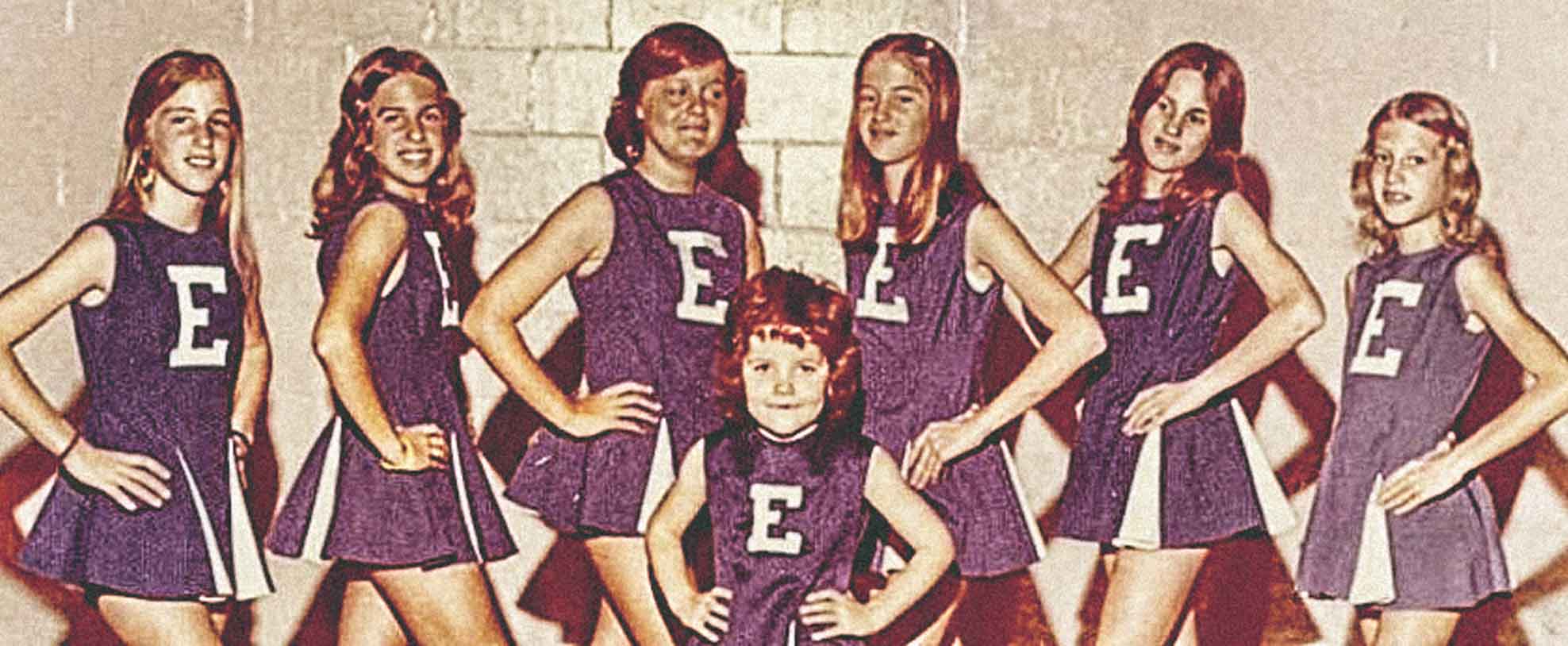
Junior high school classes returned to the South Orleans campus by the late 1970s, and all grades (first through eighth) were under one roof. By 1980 there were 418 students, and, as had been the case since almost the beginning, the academic program was, to quote Burchill, “fairly accelerated.” In fact, the curriculum is nearly a year ahead, academically, of the equivalent public school grade and the median level of achievement in public schools is used as the minimum standard at St. John’s.
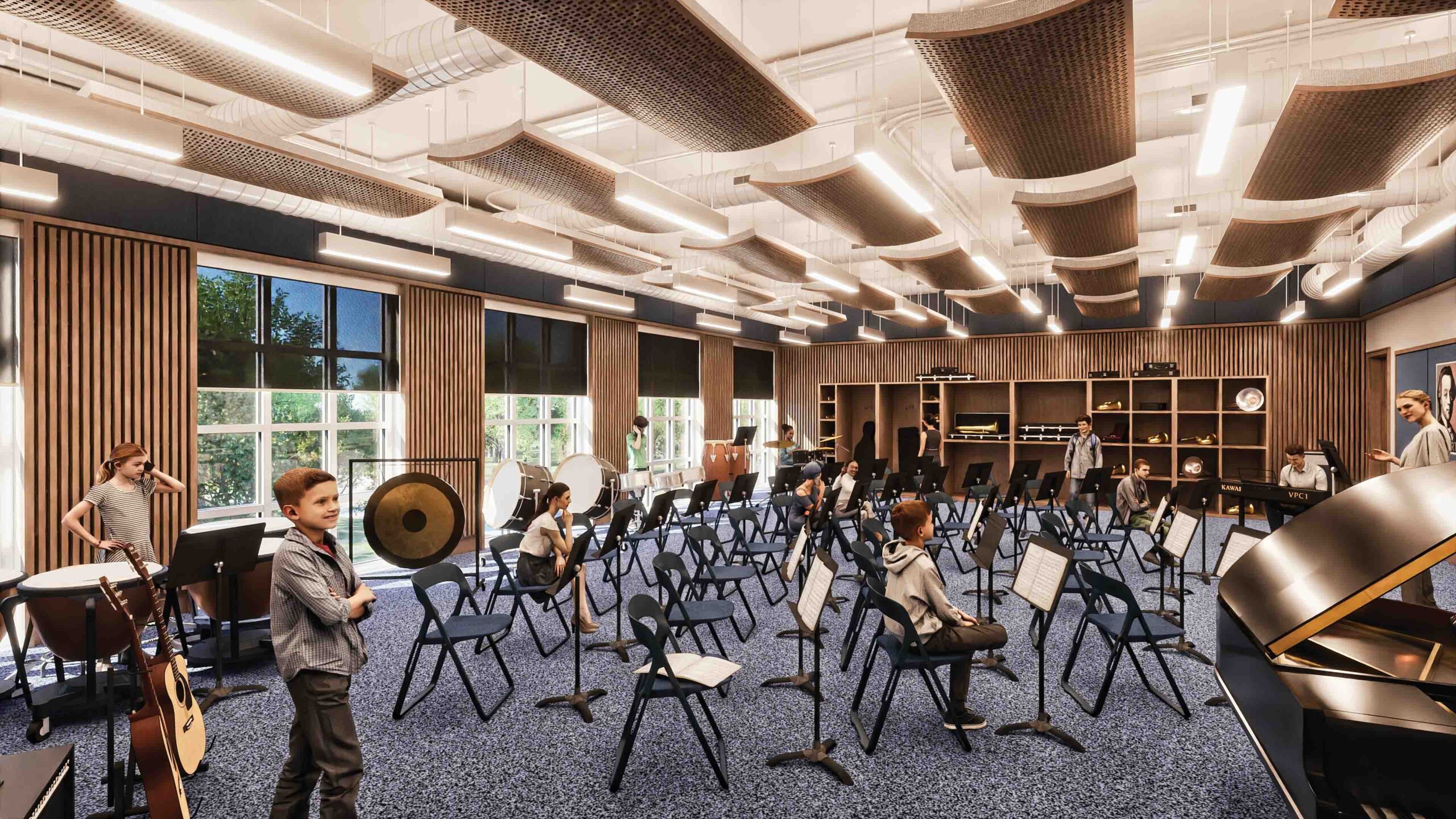
Growth in South Tampa in general, and Hyde Park in particular, pushed enrollment at St. John’s. As the need for further expansion grew more intense, school and church leaders first looked at adding onto the South Orleans campus. When neighbors expressed concern, the leadership looked at acquiring property as close to the church and school as possible. In 2000, the church purchased an office building on the northeast block of Platt and Plant Avenues and planned to add onto the building and move the Middle Division (junior high school grades) to the new location. That took place in August 2001.

Now, as the school celebrates over 70 years in Hyde Park, new plans have emerged that will completely transform the physical presence of St. John’s Parish School while preserving its mission and philosophy. The school has embarked on a capital campaign (A Place to Grow) that will fund a new campus, which will house the Lower and Middle Divisions (first through eighth grades) on the Platt Street campus. When complete, the 90,000 square feet of space will offer larger classrooms, more space for the arts (including dance, drama, choir, and band classrooms), a student support center, a student health and fitness center, auditorium with performance stage, STEM and STEAM labs, and a large athletic field.
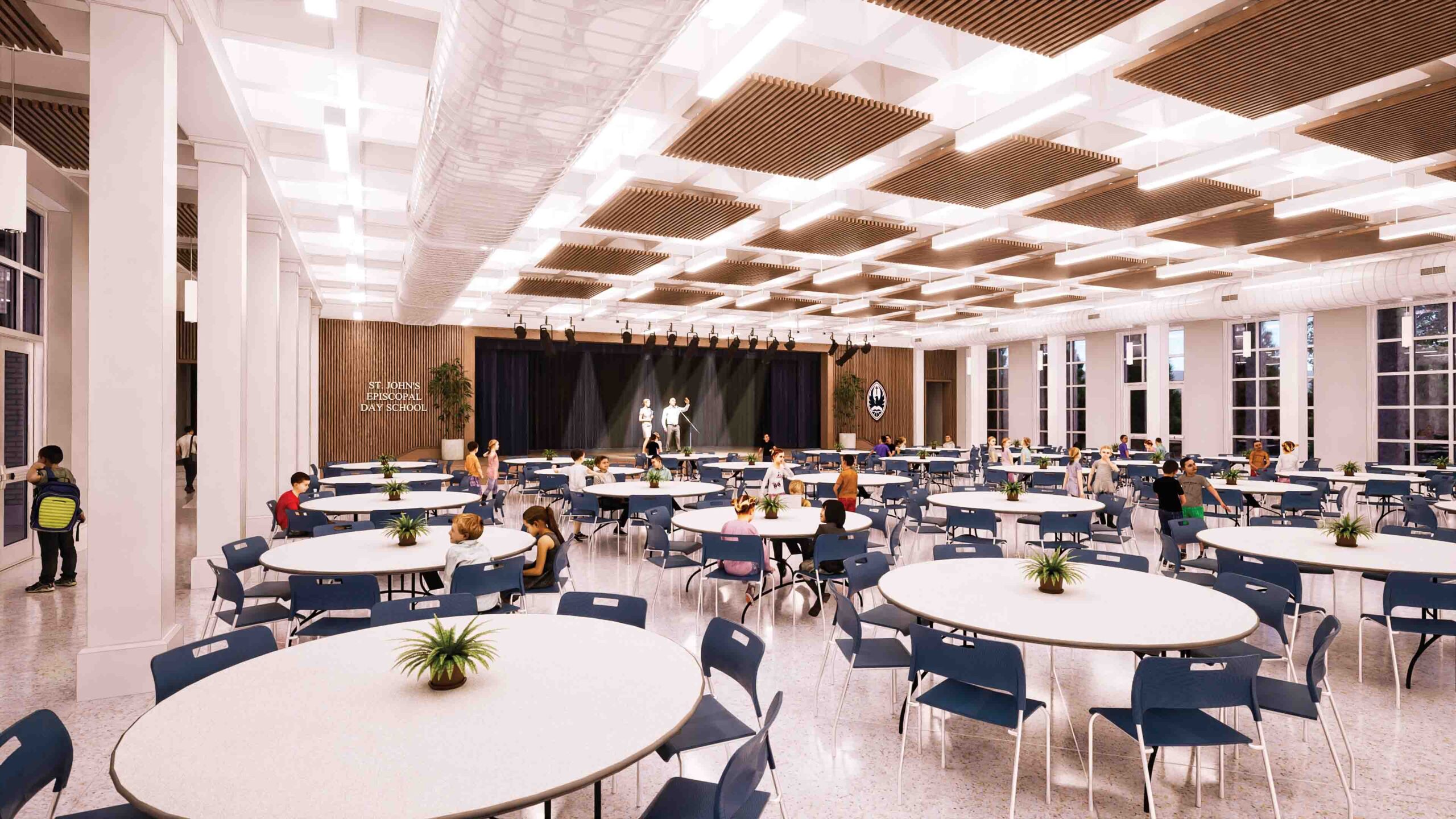
The new campus, in the words of current headmaster Hugh Jebson, will be “transformative.” The Lower and Middle Divisions will be reunited on the same campus, but the two divisions will maintain their important differences and distinctions. Michael Salzer, the head of the Lower Division (and a St. John’s alumni), added that the school is at another pivotal crossroads, but that the school facility will finally match the high quality of the faculty, the students, and the academic program that have always been the highlights of St. John’s.
Rodney Kite-Powell is a Tampa-born author, the official historian of Hillsborough County and the director of the Touchton Map Library at the Tampa Bay History Center, where he has worked since 1995.
Check St. Petersburg through the years here. Or if you’d like info on advertising with us, click here.


